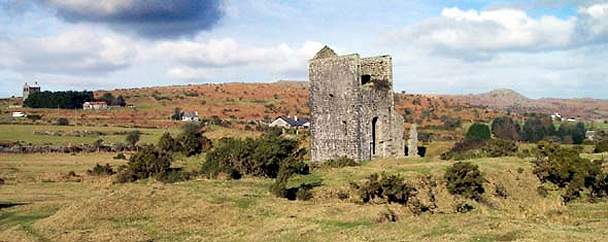Cornish History - Genealogy Pages
Genealogy Pages

Unearthing Kin: Genealogy and the Mining Communities of Cornwall, 1600-1930
The granite spine of Cornwall, England, harbours more than tin and copper. Beneath its rugged landscape lies a stratified social history inextricably bound to mineral extraction—a history preserved not in lode rock, but in parish registers, mine account books, and the migratory patterns of families whose lives were measured in fathoms underground. From the proliferation of shallow "coastal streamworks" in the 17th century to the industrialized deep-shaft mines of the Victorian era, Cornwall’s mineral wealth catalyzed unique demographic structures demanding rigorous genealogical methodologies.
Demographic Fluidity & Parochial Constraints
Cornish mining society defied static rural models. Pre-1750, communities clustered around surface workings, with baptismal records (like those at Gwennap Parish) revealing high infant mortality—often exceeding 30% in smelting-smoke-choked valleys. Post-1780, deep mining drew transient labor. Skilled "tributers" (miners paid via ore-share contracts) migrated seasonally between declining east Cornwall copper districts and burgeoning west Cornwall tin fields, fracturing family units across registration districts. Genealogists must triangulate:
Parish Records
Baptismal entries often note father’s occupation ("tin streamer," "shaft sinker") but burial registers may lack cause of death.
- - Mine Captain’s Ledgers: Surviving documents (e.g., Dolcoath Mine, Camborne) list tribute teams, exposing kinship networks otherwise invisible.
- - Methodist Circuit Books: Nonconformity dominated mining communities by 1800; Wesleyan registers capture populations omitted from Anglican records.
Kinship Economics & Occupational Heredity
Analysis of 19th-century census data reveals >80% intergenerational occupational persistence in mining parishes like St. Just. This was not mere tradition—it reflected skill specialization. "Bal maidens" (ore processors) formed matrilineal work gangs, while fathers apprenticed sons as "spallers" (ore breakers) via verbal contracts. Wills probated in the Consistory Court of Exeter show miners directing shares of future tribute earnings to widows, creating paper trails of contingent inheritance.
Catastrophe as Genealogical Marker
Mine disasters punctuate family histories. The 1893 East Wheal Rose flooding (drowned 39) generated coroner’s inquests listing next-of-kin, while the 1919 Levant Mine man-engine collapse left compensation claims identifying dependents. Such events expose household compositions obscured by census gaps.Methodological Imperatives
Reconstructing Cornish mining lineages requires:
- - Spatial Analysis: Mapping mine locations against parish boundaries to track migration.
- - Onomastic Scrutiny: Patronymics ("Williams," "Richards") dominate; distinguishing individuals requires cross-referencing mine employment numbers.
- Record Linkage: Connecting apprenticeship indentures (Cornwall Record Office) with settlement examinations to trace pauperized kin.
The slag heaps may erode, but the genealogical strata of Cornwall’s mining families—forged in risk, bonded by skill, and dispersed by boom-and-bust—endure as testaments to an industry that shaped bloodlines as relentlessly as it shaped the land.
Cornwall Online Resources
- Churches of Cornwall - A Pictorial Guide For Genealogists
- Ambra Books (Specialist Cornish books) Well worth having a look at !
- Antique Maps & Manuscripts (Specialist Cornish ancient manuscripts.) Well worth having a look at too!
- Cornish Associations World-Wide
- Cornwall Family History Society
- List of Convicts (some Cornish) sent to NSW - Australia
- CORNISH Surname Index 1,103 names
- Executions in England from 1606
- Ted Wildy - c1700-1800 - witnesses to marriages that took place in CORNWALL
- Royal Navy - Ships in Service in 1894
- Mineral
Tramways Project
- "What do they know of Cornwall who only Cornwall know"
- Emigration in the mid 19th century
- MapNotes - Industrial Archive locations in Cornwall
- Churches of South East Cornwall

